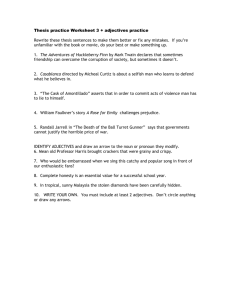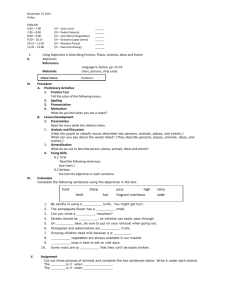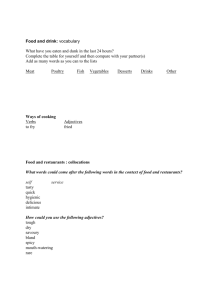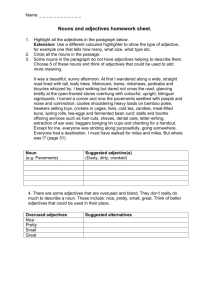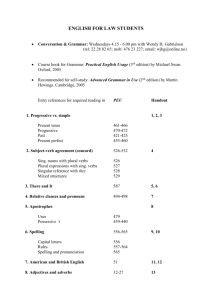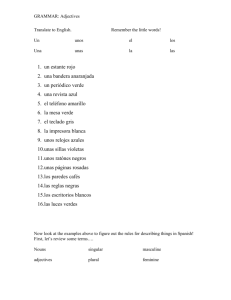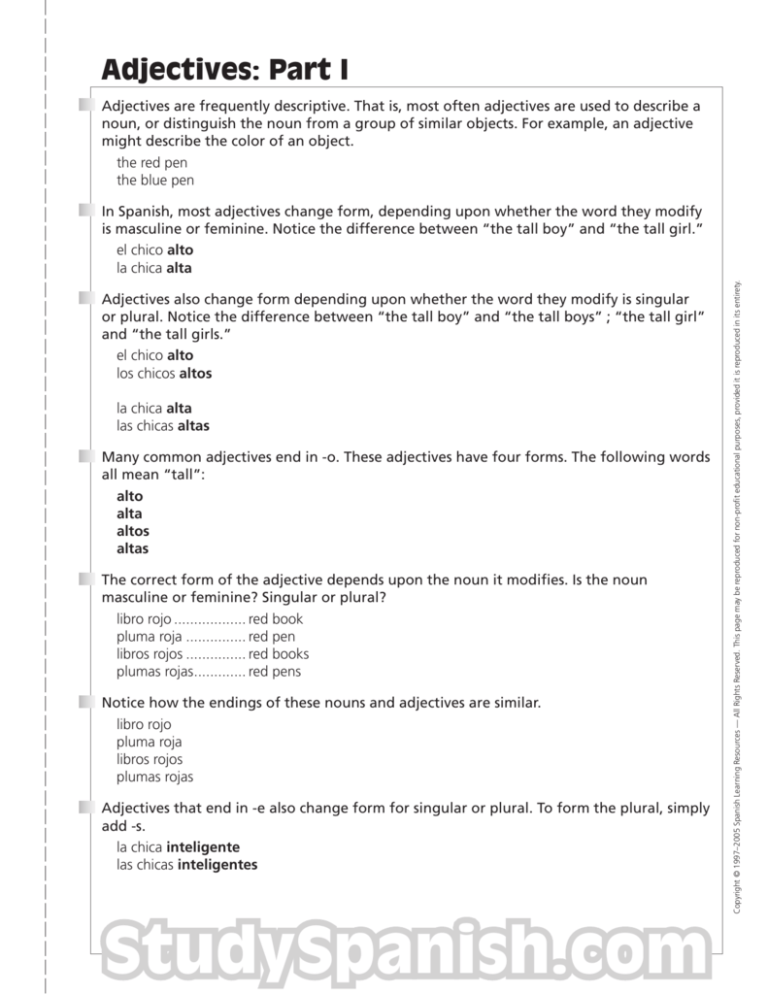
Adjectives: Part I
Adjectives are frequently descriptive. That is, most often adjectives are used to describe a
noun, or distinguish the noun from a group of similar objects. For example, an adjective
might describe the color of an object.
the red pen
the blue pen
Adjectives also change form depending upon whether the word they modify is singular
or plural. Notice the difference between “the tall boy” and “the tall boys” ; “the tall girl”
and “the tall girls.”
el chico alto
los chicos altos
la chica alta
las chicas altas
Many common adjectives end in -o. These adjectives have four forms. The following words
all mean “tall”:
alto
alta
altos
altas
The correct form of the adjective depends upon the noun it modifies. Is the noun
masculine or feminine? Singular or plural?
libro rojo .................. red book
pluma roja ............... red pen
libros rojos ............... red books
plumas rojas ............. red pens
Notice how the endings of these nouns and adjectives are similar.
libro rojo
pluma roja
libros rojos
plumas rojas
Adjectives that end in -e also change form for singular or plural. To form the plural, simply
add -s.
la chica inteligente
las chicas inteligentes
StudySpanish.com
Copyright © 1997–2005 Spanish Learning Resources — All Rights Reserved. This page may be reproduced for non-profit educational purposes, provided it is reproduced in its entirety.
In Spanish, most adjectives change form, depending upon whether the word they modify
is masculine or feminine. Notice the difference between “the tall boy” and “the tall girl.”
el chico alto
la chica alta
Adjectives that end in -e do not, however, change form for masculine or feminine.
la chica inteligente
el chico inteligente
las chicas inteligentes
los chicos inteligentes
las chicas populares
los chicos populares
Let’s review.
• Adjectives that end in -o have four forms: alto, alta, altos, altas
• Adjectives that end in -e have two forms: inteligente, inteligentes
• Most adjectives that end in a consonant have two forms: popular, populares (form plural by
adding -es)
StudySpanish.com
Copyright © 1997–2005 Spanish Learning Resources — All Rights Reserved. This page may be reproduced for non-profit educational purposes, provided it is reproduced in its entirety.
Similarly, most adjectives that end in a consonant do change form for singular or plural,
but do not change for masculine or feminine. To form the plural, add -es.
la chica popular
el chico popular

